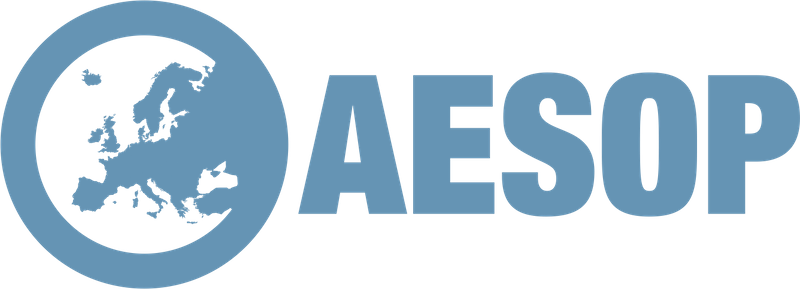How continuous certainification by decision makers results in more uncertainty
Downloads
DOI:
https://doi.org/10.24306/TrAESOP.2023.01.004Keywords:
infrastructure planning, decision making, advocacy coalition, policy belief, certainification, participation, uncertaintyAbstract
An increasingly dynamic environment and engaged society necessitates decision makers in infrastructure planning to adopt adaptive and participative planning approaches and give room to uncertainty in planning and decision making. In planning, individual actors belonging to a group of like-minded actors may attempt to influence decision-making about planning proposals. They do so by using a mix of instruments such as research, participation, agreements, and so on. To gain greater insight into the processes of interactions between decision makers and other relevant actors in planning, the planning of three infrastructure cases – a road upgrade, an airport runway redevelopment, and a river bypass in the Netherlands – was studied in-depth each covering a period of 20 years. Interestingly, a couple of overarching patterns regarding dealing with uncertainty in planning and decision-making appeared from the study. Decision makers continuously strive for ‘certainification’, and do so by deploying authority-based instruments. Indeed, they keep doing so, even if the the result obtained is opposite of that which was desired. Certainification i.e., decision makers striving for reducing uncertainties, often results in a reaction of ‘decertainification’ from opponents. It seems as if decision makers strengthen the latter’s own opposition. And when decision makers actually do give room for uncertainties through adopting an adaptive approach, other actors often demand less uncertainty; driving decision makers back to their thirst for certainification. To overcome this continuous loop, an arena and institutional setting should be created in which actors from different advocacy coalitions are involved in open dialogue to better balance the perceived uncertainties of all stakeholders.
How to Cite
Published
Issue
Section
License
Copyright (c) 2023 Klaas Veenma, Wim Leendertse, Jos Arts

This work is licensed under a Creative Commons Attribution 4.0 International License.
References
Albrechts, L. (2012). Reframing strategic spatial planning by using a coproduction perspective. Planning Theory, 12(1), 46-63. https:// dx.doi.org/10.1177/1473095212452722 DOI: https://doi.org/10.1177/1473095212452722
Arts, J., Filarski, R., Jeekel, H., & Toussaint, B. (eds.). (2016). Builders and planners: A history of land-use and infrastructure planning in the Netherlands. Delft: Eburon.
De Roo, G., Rauws, W., & Zuidema, C. (2020). Rationalities for adaptive planning to address uncertainties. In G. de Roo, C. Yamu, & C. Zuidema (Eds.), Handbook on Planning and Complexity (pp. 110-150). (Research Handbooks in Planning). Edward Elgar Publishing. DOI: https://doi.org/10.4337/9781786439185.00011
Flyvbjerg, B. (2001). Making social science matter: Why social inquiry fails and how it can succeed again. England: Cambridge University Press. DOI: https://doi.org/10.1017/CBO9780511810503
Friend, J., & Hickling, A. (2005). Planning under pressure (3rd ed.). Oxford: Butterworth-Heinemann.
Hajer, M., Grijzen, J., & Van ’t Klooster, S. (red). (2010). Sterke verhalen: Hoe Nederland de planologie opnieuw uitvindt – Strong stories: How the Dutch are reinventing spatial planning. Design and Politics #3. Rotterdam: Uitgeverij 010.
Heeres, N., T. Tillema & J. Arts (2012), Integration in Dutch planning of motorways: From “line” towards “area- oriented” approaches, Transport Policy, 24, 148-158. 10.1016/j.tranpol.2012.08.002 DOI: https://doi.org/10.1016/j.tranpol.2012.08.002
Howlett, M., Ramesh, M., & Perl, A. (2009). Studying public policy: Policy cycles & policy subsystems. England: Oxford University Press.
Howlett, M. (2018). Policy instruments and policy design choices: Selecting substantive and procedural tools in public policymaking. In M. Howlett, & I. Mukherjee (eds.), Routledge handbook of policy design (pp. 77- 86). New York: Routledge. DOI: https://doi.org/10.4324/9781351252928-5
Klijn, E.H., & Koppenjan, J.F.M. (2016). Governance networks in the public sector: A network approach to public problem solving, policy making and service delivery. New York: Routledge.
Leendertse, W.L. (2020, 25 februari). Infrastructuur in beweging: Een perspectief op integratie en adaptatie in infrastructuurontwikkeling (inaugurele rede). Groningen: Rijksuniversiteit Groningen.
Sabatier, P.A., & Jenkins-Smith, H.C. (eds.). (1993). Policy change and learning: An advocacy coalition approach. San Fransisco: Westview Press.
Teisman, G.R. (2000). Models for research into decision-making processes: On phases, streams
and decision-making rounds. Public Administration, 78, 937-956. https://doi.org/10.1111/1467-9299.00238 DOI: https://doi.org/10.1111/1467-9299.00238
Turnhout, E., Hisschemöller, M., & Eijsackers, H. (2008). Science in Wadden Sea policy: From accommadion to advocacy. Environmental Science & Policy, 11(3), 227-239. http://dx.doi.org/10.1016/j.envsci.2007.07.004 DOI: https://doi.org/10.1016/j.envsci.2007.07.004
Van Asselt, M.B.A., Mesman, J., & Van ’t Klooster, S. (2007). Dealing with prognostic uncertainty. Futures, 39(6), 669-684, http:// dx.doi.org/10.1016/j.futures.2006.11.011 DOI: https://doi.org/10.1016/j.futures.2006.11.011
Van Asselt, M.B.A. & Rijkens-Klomp, N. (2002). A look in the mirror: Reflection on participation in Integrated Assessment from a methodological perspective. Global Environmental Change, 12, 167-184. https://doi.org/10.1016/S0959-3780(02)00012-2 DOI: https://doi.org/10.1016/S0959-3780(02)00012-2
Van der Pas, J.W.G.M., Kwakkel, J.H., & Van Wee B. (2012). Evaluating adaptive policymaking using expert opinions. Technological Forecasting & Sociale Change, 79, 311-325. doi:10.1016/j.techfore.2011.07.009 DOI: https://doi.org/10.1016/j.techfore.2011.07.009
Veenma, K. (2021). Ruimte voor onzekerheid: Interactie tussen actoren in de dynamiek van infrastructuurplanning (proefschrift). Groningen: Rijksuniversiteit Groningen.
Veenman, S.A. & Leroy, P. (2016). Environmental outlooks: How they frame futures and long-term uncertainty. Futures, 82, 63-75. http://dx.doi.org/10.1016/j.futures.2016.06.004 DOI: https://doi.org/10.1016/j.futures.2016.06.004
Woltjer, J. (2002). The ‘public support machine’: Notions of the function of participatory planning by Dutch infrastructure planners. Planning Practice and Research, 17(4), 437-453. doi: 10.1080/02697450216358 DOI: https://doi.org/10.1080/02697450216358

